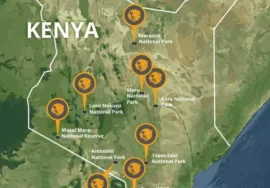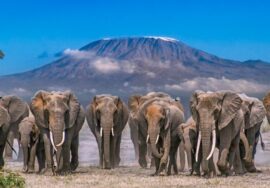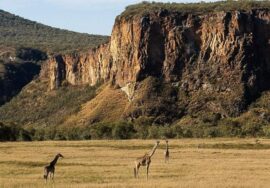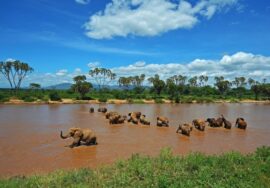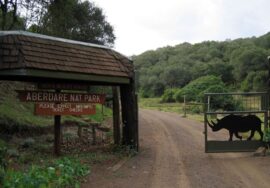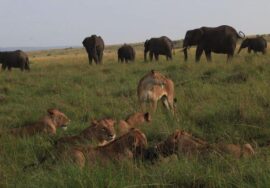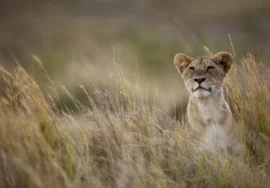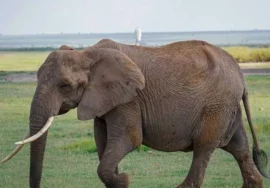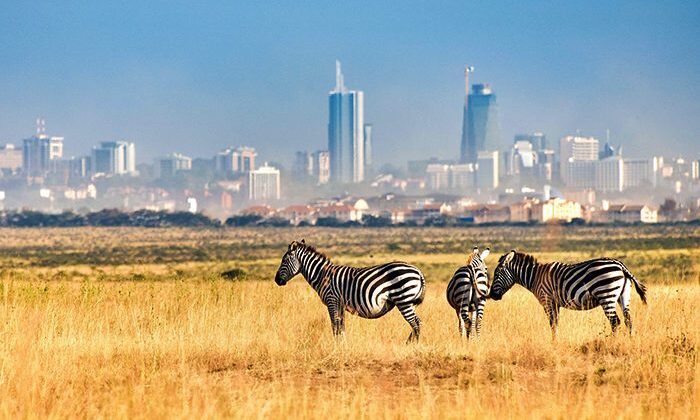
NAIROBI NATIONAL PARK
This park is so close that you can visit for one day or even three days and still be back in time for drinks in the afternoon.
Ark of Kifaru
How do I get Kifaru Ark? The word “kifaru” in Kiswahi means “rhinoceros.”
The large number of black rhinos in Nairobi National Park is well known. Rhinos are well protected here, and there are so many that the reserve sends rhinos to other parks in Kenya.
The Great Migration of Wildebeest
If you visit Nairobi National Park between July and August, you will see thousands of wildebeests and zebras moving through the park. This is a very rare sight. This is what big groups of animals do every year as they roam the wilds in search of grass that grows bigger. When set against the skyline in the background, it’s a sight that you’ll never forget.
Trails in Nairobi National Park
Nairobi National Park is a wild nature park, but it also has some of the easy-going features of a city park. On the many easy walking paths, there are places to have a picnic. And there’s more than 400 different kinds of birds in the sky and trees, so don’t just look at what’s happening on the ground. A lot of schoolkids from Nairobi may also be in the park having fun with you.
Nairobi National Park’s best parts
Black Rhinos in Peril – They have one of the densest groups of black rhinos in Kenya, so it will be hard to miss them! The protected breeding program at Nairobi National Park is a great example of how to protect wildlife, and it ensures that you will see the endangered species.
See four of the “Big Five” on a game drive. You can see lions, leopards, buffalo, and rhinos. There are also hippos, giraffes, zebras, impalas, hartebeests, baboons, elands, and more.
One more unique treat is the David Sheldrick Elephant Orphanage. This refuge inside the park takes in and cares for hurt or abandoned baby elephants and rhinos. When it’s time to eat, come here and watch a bunch of cute kids run for their big baby bottles.
Ivory Burning Site Monument: This is where history was made when Kenya’s leaders watched as tons of illegal ivory were burned as a sign of peace. Kenya’s dedication to ending the ivory trade and protecting its elephants was shown by these regular burnings.
Wildebeest and zebra migration: Grazers come into Kenya in large numbers from July to October in their never-ending search for food. You can’t miss this amazing show of wildlife if you’re in the park in July or August.
How Nairobi National Park Came to Be
Nairobi National Park is the largest national park in Kenya. It opened to the public in 1946. Before that, as Nairobi grew, people moved into the area, pushing animals farther away from the city. The groups got smaller because of this, and they need to be protected. To help, a 30,000-acre national park was made as a safe place for people in the close city to get away.
Nairobi National Park has a long history that goes back to the early 1900s, when the British colonial government set aside a big area of land to protect wildlife from being hunted by many people. The park wasn’t really open to the public, though, until the middle of the 1940s. Big game species were supposed to be able to breed safely in the park at first, but it quickly became a popular place for both locals and tourists to visit. Nairobi National Park is now one of the most important wildlife refuges in Africa, and every year it gets tens of thousands of tourists.
The park is a very important refuge for many animal species, even though it is only a few miles from the busy city of Nairobi. Lions, cheetahs, zebras, giraffes, and many other famous African animals have lived there over the years. Because of its unique setting and long past, the park is a must-see for anyone interested in protecting wildlife and seeing the natural beauty of Africa.
Size, location, and other important facts about Nairobi National Park
There is a lot of wildlife in this relatively small national park in Nairobi, which is only 30,000 acres (117 sq. km) (45 sq mi) and is close to a big world capital.
The park is 7 km south of Nairobi. It doesn’t take long to get there from the city center.
Weather: The park is mostly dry, except for the rainy season from April to June. The temperature during the day is usually 22oC/72oF.
When is the best time to go? The dry season, from July to March, is wonderful for seeing wildlife. From April to June, it rains a lot, making the paths muddy and making it harder to see animals. During July and August, people can go see the movement.
Hours: The park is open every day from 6:00 am to 6:00 pm.
How to get there: From the center of Nairobi, take Langata Road. Safari Trips to Kenya lets you book trips for either a full or half day.

